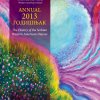The Serbian language very much reflects how Serbia still straddles the boundaries between East and West. Although it's complex pronunciations make it a challenging language to learn, this Slavic language uses both the Cyrillic and Latin scripts with many letters written and pronounced as in English. While English is widely spoken in Serbia, to enhance your experience of the country it will be beneficial to learn the basics. Bear in mind that signs, including road signs and virtually everything you see, will be written in a mixture of Cyrillic and Latin, so getting to grips with the alphabet is key.
.A great man is one who collects knowledge the way a bee collects honey and uses it to help people overcome the difficulties they endure - hunger, ignorance and disease!
- Nikola Tesla
Remember, remember always, that all of us, and you and I especially, are descended from immigrants and revolutionists.
- Franklin Roosevelt
While their territory has been devastated and their homes despoiled, the spirit of the Serbian people has not been broken.
- Woodrow Wilson
Latest Articles
- Crafting Pišanice - Serbian Easter Eggs with Natural Dyes
- From Nicaea to Today: The Enduring Legacy of Synodality and Unity in the Church
- The Role of the Deacons in the Church
- The Circle of Serbian Sisters
- Vinka Ellesin
- Богородица као екстатично биће
- Bishop Maxim's Homily During the Assembly of Bishops XII Opening Liturgy
- Leon Joseph Lysaght Jr.
- Olga Gradojevich
People Directory
Lolita Davidovich
Lolita Davidovich (Serbian: Лолита Давидовић; born July 15, 1961) is a Canadian film and television actress.Davidovich was born in London, Ontario, the daughter of immigrants from Yugoslavia. Her father was from Belgrade, the capital of Serbia, and her mother was from Slovenia; she spoke only Serbian during her early years. She studied at the Herbert Berghof Studio in New York.
. Read more ...Publishing
Western American Diocese - Annual 2013
2013 marked several momentous occasions: 50 years of the founding of the Western American Diocese, 150 years of the birth of Archimandrite Sebastian Dabovich, Holy Apostle to the Americas, 1700 years of the Edict of Milan, and a special tribute to Nikola Tesla! Our main focus during this three-day Jubilee Celebration was on the freedom to pursue our faith since the time of Constantine 1700 years ago and how to better live a spiritual life.As a special tribute, a beautiful commemorative edition of the Annual was prepared, which reflects the History of the Western American Diocese! It is adorned with beautiful photographs and historical articles from our parishes and monateries! It also showcases the wonderful work that has been done over the past year throughout our Diocese and information about our many ongoing ministries. This publicaton also includes a Directory of Parishes.
There are two version of this publication available. Our Hardcover version sells for $15. Our Softcover version sells for $10 and includes Ads & Greetings from families and businesses throughout our Diocese.
Latest US News
- Волт Богданић: Американац српског порекла добитник три Пулицерове награде за истраживачко новинарство
- The American Srbobran - Building a Partnership with the Library of Congress and Institutions in Serbia
- „Американски Србобран“ унапређује сарадњу са Конгресном библиотеком у Вашингтону и институцијама у Србији
- Преминуо чувени амерички песник српског порекла Чарлс Симић
- Јован Дучић међу великанима у кливлендској башти
- Србија, Африка, Америка и Канада славе дан Теслиног рођења
- Документарац Немање Станковића приказан у Холивуду
- Tesla Rhapsody
- Saved by Beauty: Dostoevsky in New York
- Izložba likovnih radova o Dostojevskom
- Steve Popovich - the man who discovered Meat Loaf
- Odlazak čoveka koji je mnogo uradio za očuvanje sećanja na lik i delo Nikole Tesle
- Naš otac Balkanac za Ruse je smislio bijelu Coca-Colu
- Neverovatan poduhvat srpske pravoslavne zajednice u Americi
- Prva Srpkinja u finalu najveće evropske nagrade za pronalazače
Latest Serbia News
- На Станфорд листи 15 крагујевачких научника
- Naše postojanje skriva mračne i svetle strane, i veliko je umeće prepoznati ih i razlučiti
- Српска застава је најлепша на свету – на основу резултата анкете милион људи
- Недеља америчке културе
- Preminuo pisac Aleksandar Petrov
- Spomenik Branku Pešiću radiće srpski vajar iz Los Anđelesa
- Metropolitan Amfilohije buried in the Cathedral church in Podgorica
- Memorial prayer rite for Metropolitan Amfilohije in the Cetinje Monastery
- На данашњи дан рођен је Михајло Идворски Пупин
- Алекса је стигао до Принстона, али Математичкој гимназији се радо враћа
- Каубој православац и 40 Американаца посетили Косово
- Архив Војводине: Сведочанства времена у спомен на херојске претке
- Премијера „Теслиног народа“ на Коларцу
- Када се велики умови играју науком о подацима
- Američka vojska donirala je vrednu opremu klinici u Nišu




